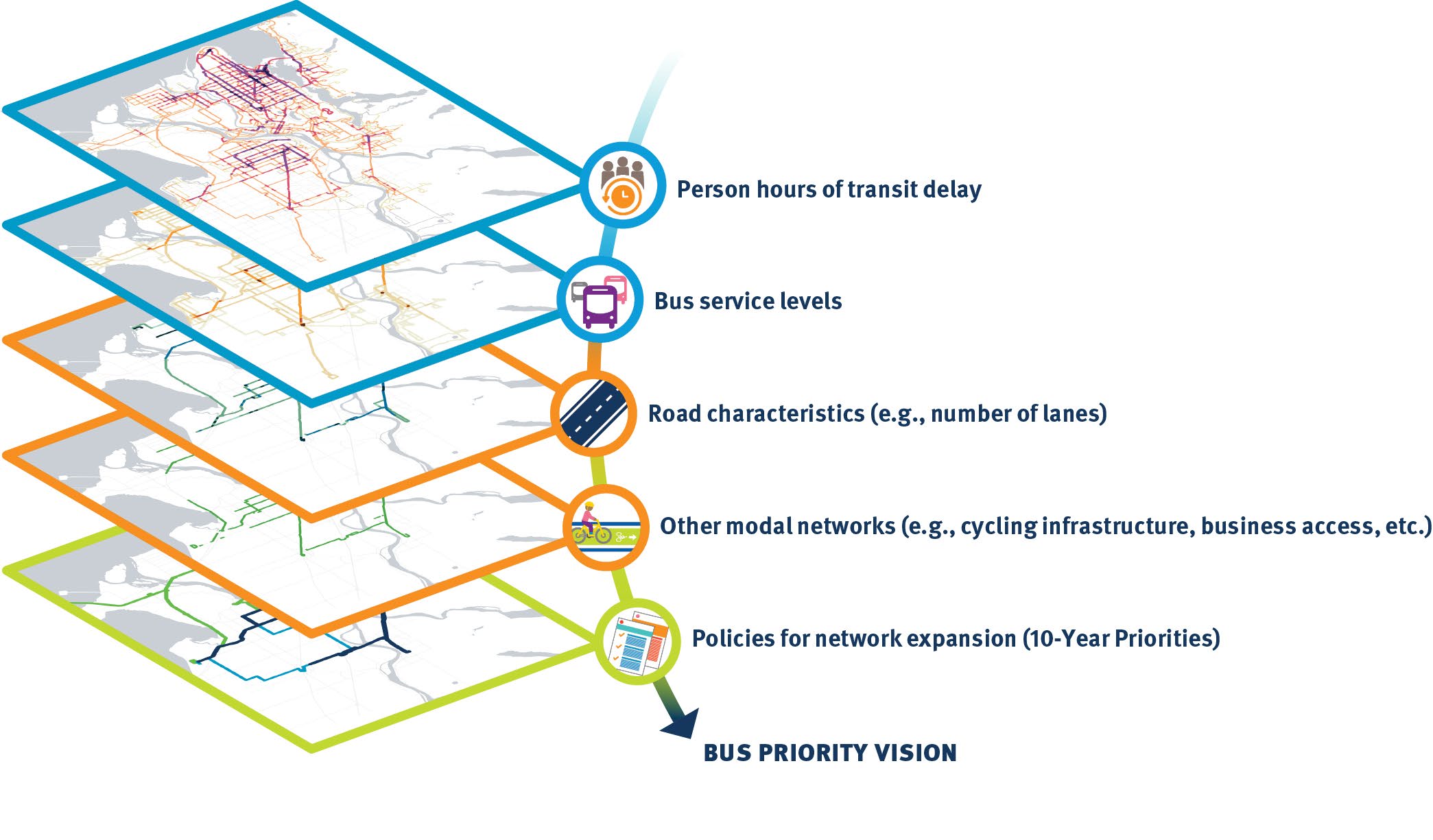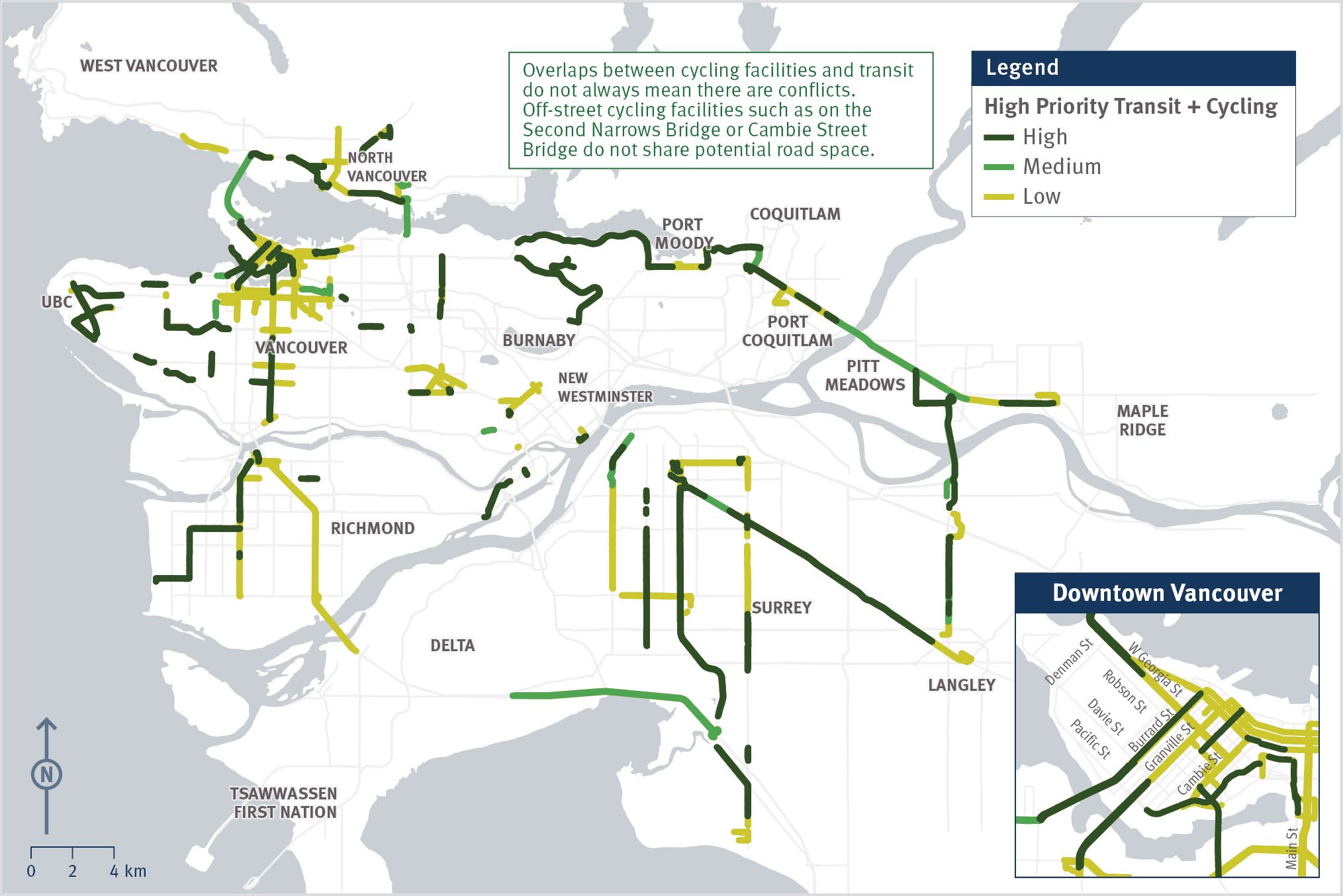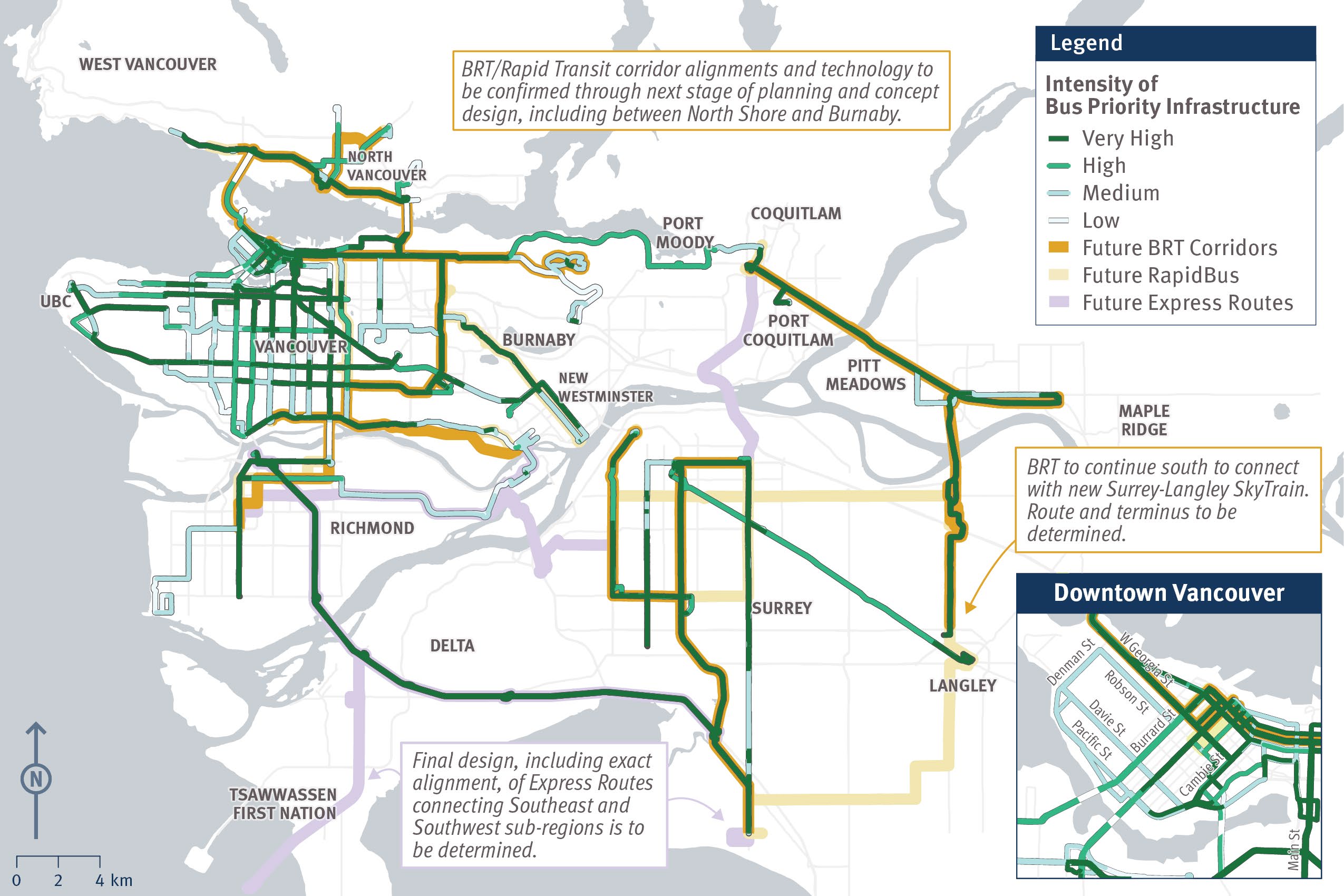4 big ideas from TransLink’s Bus Priority Vision
4 big ideas from TransLink’s Bus Priority Vision
Picture a future where your bus zips past traffic jams, bringing you to your destination faster and more reliably. That’s exactly what we’re aiming for with our Bus Priority Vision: speeding up your commute and increasing reliability across our Frequent Transit Network (FTN).
Our goal: faster, more reliable buses across our Frequent Transit Network
The Frequent Transit Network is a network of corridors where transit service runs at least every 15 minutes in both directions throughout the day and into the evening, every day of the week. This network forms the backbone of our transportation system where customers can expect convenient, easy-to-use services frequent enough that they don’t need to refer to a schedule.
With the implementation of the Bus Priority Vision, we’re set to enhance this network to make our services more convenient for all commuters. Here’s how:

Custom solutions for every corridor
The Bus Priority Vision is all about recognizing that every corridor has its own set of needs requiring tailored solutions.
In dense urban areas, all-day bus lanes and advanced signal systems may work best to keep buses moving. Whereas on our quieter routes, simpler adjustments like bus stop balancing could help make all the difference.
Working collaboratively with local stakeholders and governments is a cornerstone of the Bus Priority Vision. It ensures our plans are aligned and fine-tuned with the needs of the individual community. By doing so, the Vision not only ensures that it enhances bus service, but also contributes to the overall quality of life in each neighbourhood.
Categorizing bus priority needs
The Regional Bus Priority Vision map categorizes different sections of the Frequent Transit Network based on the intensity of bus priority required. This conceptual vision helps identify areas of need and ensures that resources are channelled effectively.
Integrating with existing infrastructure
Our vision for bus priority isn’t about overhauling the entire system. Instead, it integrates improvements into existing infrastructure, all while minimizing disruptions and maximizing benefits. This could look like:
- Making signal adjustments to prioritize buses at intersections, cutting down wait times and getting busses out of traffic – speeding up your overall commute.
- Prioritizing bus lanes in areas where buses often experience delays especially during peak hours.
- Ensuring a safer and more convenient environment by integrating bus routes with other modes of transportation.

Through a more thoughtful approach to bus infrastructure, the Bus Priority Vision enhances service reliability and commuter satisfaction while preserving the existing urban fabric. By building on what already exists, we can quickly make improvements to the transit system in Metro Vancouver without the need for large-scale construction projects.
Interested in reading the report? visit translink.ca/buspriority.
James Cabangon






